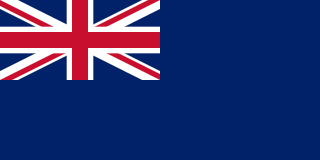 W
WThe Atlantic Fleet was a naval fleet of the Royal Navy. It existed for two separate periods; 1909 until 1914, and then 1919 until 1932.
 W
WThe British Baltic Fleet and also known as the Baltic Squadron was a series of temporary or semi permanent fleets of the Royal Navy. They were assembled for various naval operations in the Baltic Sea from 1658 to 1856 commanded by the Commander-in-Chief, Baltic Fleet.
 W
WThe Battle Cruiser Fleet, (BCF), later known as Battle Cruiser Force, a naval formation of fast battlecruisers of the Royal Navy, operated from 1915 to 1919.
 W
WThe British Pacific Fleet (BPF) was a Royal Navy formation that saw action against Japan during the Second World War. The fleet was composed of Commonwealth naval vessels. The BPF formally came into being on 22 November 1944 from the remaining ships of the former Eastern Fleet then being re-named the East Indies Fleet and continuing to be based in Trincomalee. The British Pacific Fleet's main base was at Sydney, Australia, with a forward base at Manus Island. One of the largest fleets ever assembled by the Royal Navy, by Victory over Japan Day it consisted of over two hundred ships and submarines and more than 750 aircraft; including four battleships and six fleet aircraft carriers, fifteen smaller aircraft carriers, eleven cruisers and numerous smaller warships, submarines, and support vessels. The fleet took part in the Battle of Okinawa and the final naval strikes on Japan.
 W
WThe Channel Fleet and originally known as the Channel Squadron was the Royal Navy formation of warships that defended the waters of the English Channel from 1854 to 1909 and 1914 to 1915.
 W
WThe Commander-in-Chief Fleet (CINCFLEET) was the admiral responsible for the operations of the ships, submarines and aircraft of the British Royal Navy from 1971 until April 2012. The post was subordinate to the First Sea Lord, the professional head of the Naval Service. In its last years, as the Navy shrank, more administrative responsibilities were added.
 W
WThe Eastern Fleet, later called the East Indies Fleet, was a fleet of the Royal Navy which existed between 1941 and 1952.
 W
WThe Eastern Fleet, later called the East Indies Fleet, was a fleet of the Royal Navy which existed between 1941 and 1952.
 W
WThe Far East Fleet was a fleet of the Royal Navy which existed between 1952 and 1971.
 W
WThe Grand Fleet was the main fleet of the Royal Navy during the First World War.
 W
WThe Home Fleet was a fleet of the Royal Navy that operated from the United Kingdom's territorial waters from 1902 with intervals until 1967.
 W
WThe professional head of the Royal Navy is known as the First Sea Lord and Chief of the Naval Staff (1SL/CNS).
 W
WThe British Mediterranean Fleet, also known as the Mediterranean Station, was a formation of the Royal Navy. The Fleet was one of the most prestigious commands in the navy for the majority of its history, defending the vital sea link between the United Kingdom and the majority of the British Empire in the Eastern Hemisphere. The first Commander-in-Chief for the Mediterranean Fleet was the appointment of General at Sea Robert Blake in September 1654. The Fleet was in existence until 1967.
 W
WThe North Sea Fleet was a naval formation and major operational command of the British Royal Navy based at Great Yarmouth from 1745 to 1802 then at Ramsgate from 1803 until 1815.
 W
WThe Reserve Fleet was a Royal Navy formation of decommissioned vessels which could be brought to a state of readiness at time of war.
 W
WThe Western Fleet was a fleet of the Royal Navy from June 1967 to 1971.